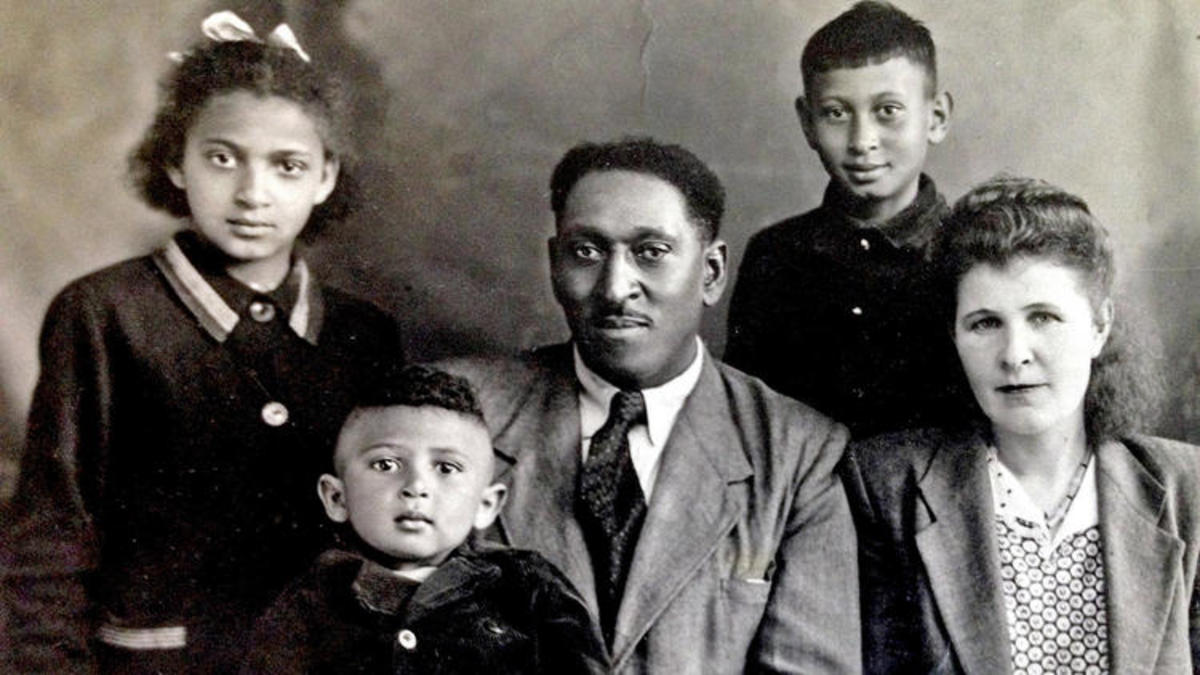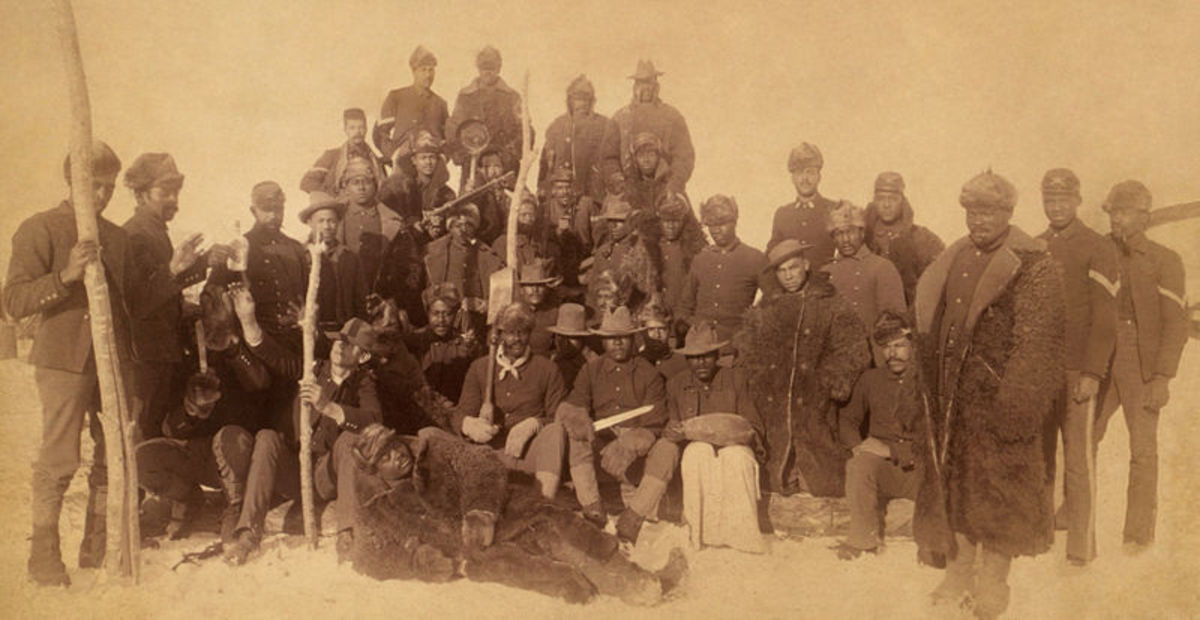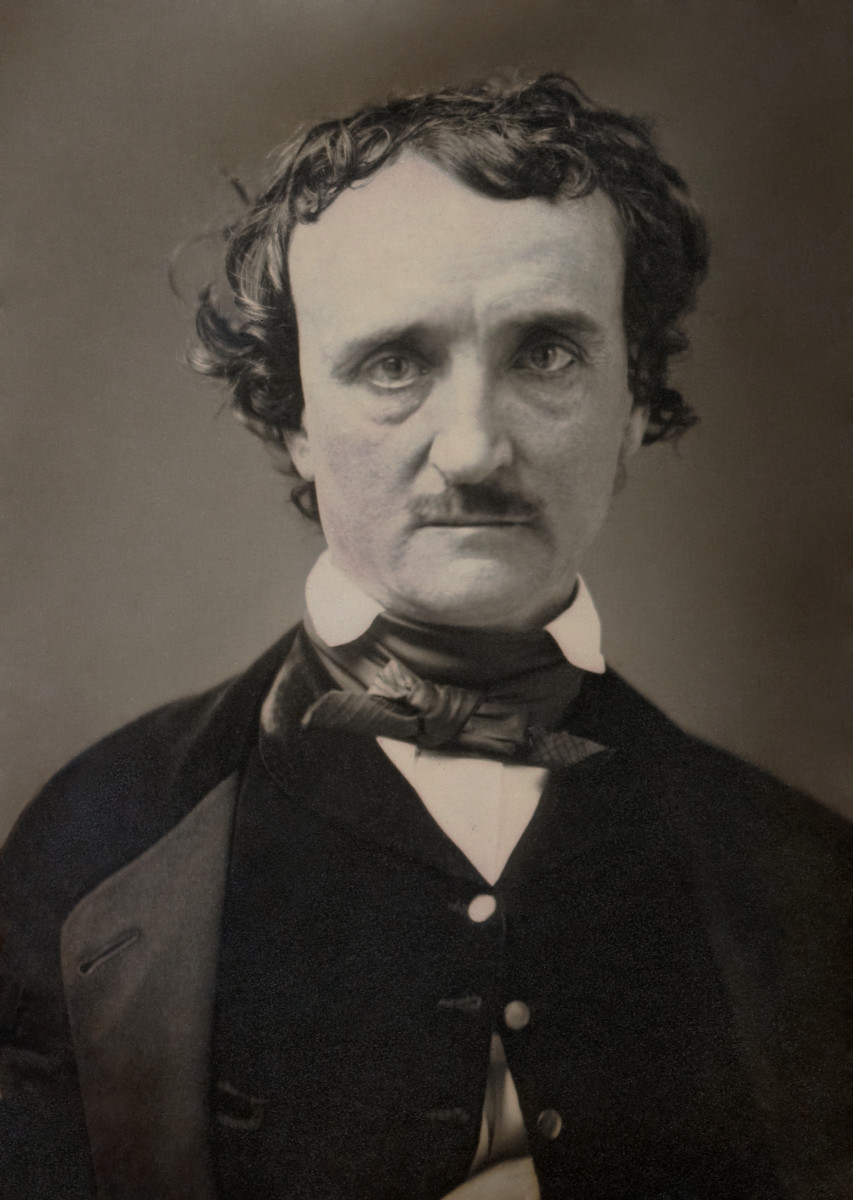Trouble in Mind and Chaos: A Reflection of Alice Childress’ Experiences

For Alice Childress the stage is a platform to voice opinion, bring light to social ills, and explore what it means to be an American and a human being. As such, Childress’ play Trouble in Mind should be read as a historical document that is validated by Childress’ own experiences as a Black female, playwright, novelist, and actress.
Childress' Background
Before one can read Trouble in Mind as a piece of history, one must know about how Alice Childress’ background affects her work. Alice Childress was born in Charleston, South Carolina in 1920 (Barlowe 469). Childress did not stay in the south long but moved up north to Harlem where she stayed until she died in 1994. Most people find Childress’ novels, plays, and poems amazing since she never completed high school. As Olga Dugan states, most of Childress’ training for acting was not “formal, but on-the-job” (124), much like her characters in Trouble in Mind. Childress spent a good portion of her life acting and directing with the American Negro Theatre, which she helped found (Barlowe 469). As a writer, teachers always wanted Childress to address Blacks that were gifted and known. However, Childress decided to “write about those that come in second, or not at all,” because regular people were interesting and just as important (470; Wilkerson 69).
Ideas for Trouble in Mind
Most of the material for Trouble in Mind comes from what Childress sees in the world around her. One of the biggest inspirations for Trouble in Mind was a song by Richard M. Jones: “Trouble in mind, I’m blue / But I won’t be blue always / The sun will shine in my back door someday” (Barlowe 475). The same issues Childress saw are still present today and make Childress’ work timeless (Armstrong 30; Evans 202; Dugan 128). Samuel A. Hayes notes that there are obvious political issues addressed from the 1950s and “Trouble is clearly set in the context of the social upheavals of the fifties” (471). Henry Louis Gates, Jr. suggests the 1940s through 1960s “called not for escape but for confrontation with life in all its ‘sprawling messiness’” (1319). Childress does not take the angry Black woman approach to voicing her concerns. Rather, Childress offers true glimpses of situations in which racial tensions run high.
Trouble in Mind (song)
Accomplishments
How such a talented writer became a lost pillar of Black rights gets to the core of the problems Childress explores. The chronology of Childress’ accomplishments can span several pages (Fullwood 1-2). Childress had several roles on Broadway, numerous appearances in Black theatre, wrote at least twelve plays, wrote approximately seven novels, has a week named after her in Charleston and Columbia, South Carolina (starting back in 1977), won multiple awards including an Obie for Trouble in Mind, had several of her works adapted for television, earned an honorary doctorate, and the list goes on (Fullwood 1-2; Barlowe 476-9). For someone as influential and distinguished as Alice Childress, she is rarely in anthologies or mentioned when it comes to such holidays as Black history month. Maybe Childress’ early attack, through Trouble in Mind and “critique of the history of the American stage” being racially biased plays a role (Barlowe 473). However, Trouble in Mind received and still receives positive feedback from audiences (Barlowe 470-1; Armstrong 30). But Doris E. Abramson who believes Childress’ plays “would be better if she did not assault race prejudice at every turn” gets to the point (Schroeder 323). Trouble in Mind may have fallen to the wayside because it was produced in 1955, right before the Civil Rights movement. Additionally, history shows that female dramatists receive little acknowledgement, and Black female dramatist receive even less (Brown 10; Schroeder 323). But ignoring Childress’ accomplishments and writings is ignoring a piece of history (Brown-Guillory Black Women Playwrights 239; Morrison 5).
Reflection of Experiences
Trouble in Mind reflects Childress’ own experiences as a Black female playwright in a White patriarchal society. Elizabeth Brown notes, “For many years after the emancipation, blacks were all but excluded from the American theatre as audience, actors or playwrights” (4). It is only when the American government establishes the Federal Theatre Project that Black playwrights can become part of American theatre and give a better depiction of Blacks (6; Brown-Guillory Images 2). While Childress was a fighting spirit, she realized that at times one had to sacrifice in order to get ahead. As “the man” controls everything—the theatre as the producer, director, playwright, theatre owner and critic—Blacks are left to his mercy (Jennings 30; Dugan 129). Most critics agree that Childress did not “compromise her art” to be part of the mainstream (Fullwood 2). However La Vinia Delois Jennings notes that at one point Childress did change the ending of Trouble in Mind to keep the show running but soon changed it back (7). The fact is between 1926 and 1959 only ten plays either completely or partially written by African Americans were produced on Broadway (Gates and McKay 1326; Morrison 9). Childress could have been the first Black woman to have a play produced on Broadway but refused to make changes that would make the play less controversial. For example, Doris E. Abramson provides a piece of an alternate ending in which Al Manners, the producer of Chaos in Belleville, says: I, a prejudiced man, ask you, a prejudiced cast, to wait until our prejudiced author arrives tomorrow. I propose that we sit down in mutual blindness and try to find a way to bring some splinter of truth to a prejudiced audience” (202-3). There are several endings and reworkings of Trouble in Mind, and Childress liked none of them (Evans 200-1; Barlowe 475).
Childress explores the ending to Trouble further in and interview with Kathleen Betsko and Rachel Koenig:
Interviewer: Do you care if endings are upsetting to the audience?
Childress: No, I don’t, but I do care if the audience feels something is unbelievable or a lie (66).
Childress does not let being othered or rejected affect her work and what she believes in. Staying true to her stories and real life was more important. The truth in the mid-1950s was “White audiences ‘[didn’t] want to believe’ or see people of color as they really are and ‘want to be seen’” (Barlowe 472; Brown 7).
Roles
Childress acknowledges in her writing that many Black actors took jobs even if they were demeaning. Judith E. Barlowe adds to thoughts of Arthur Gelb that Black actors often played stereotypical roles that they knew were wrong (471). Childress often played undesirable roles but more often was turned away because she was not Black enough for roles not produced by the American Negro Theatre (469). Childress does not shy away from the truth:
Interviewer: What exactly bothered you about the roles you played as an actress?
Childress: They were stereotypes, “packaged situations. I don’t mean derogatory stereotypes, but too predictable (Betsko and Koenig 68).
Childress becomes a victim of mainstream society. She must give White people something familiar so they have an image to throw back at her that makes her unwanted. Sheldon Forrester—a Black experienced actor in Trouble in Mind—struggles with this hypocrisy when his character Sam is supposed to say, “Iffen” (Childress 492). Sheldon has no idea what this word is but does not question it for fear of losing his job. Eventually he realizes what he, this Black man, is supposed to be saying and moves on. Sheldon should know the word “Iffen” if he is truly Black, but obviously he is not Black enough to recognize Black English vernacular (BEV).
Alternate Terms for BEV
- African American Vernacular English (AAVE)
- African American Language (AAL)
- African American English
- Black English
- Black Vernacular English (BVE)
- Ebonics
Trouble in Mind is unique in that it airs the concerns and experiences of those with little to no voice written by someone who according to White patriarchal society is to have little to no voice. Childress once said, “The Negro woman will attain her rightful place in American literature when those of us who care about truth, justice and a better life tell her story, with the full knowledge and appreciation of her constant, unrelenting struggle against racism and for human rights” (Barlowe 469). Childress’ claim can be broadened to include anyone that is oppressed or considered an “other.” Furthermore, the quote can be expanded beyond American literature to American society. The struggle to show a realistic portrayal of Blacks was common and is still ongoing.
A Lost Work
Childress’ work, Trouble in Mind has not only been ignored but also undermined. Trouble was first billed as a comedy-drama (Barlowe 470). There is nothing funny about a story that has a lynching or racial tension. Yet, Trouble in Mind is given a label that is just as contradictory as the history of the nation. A way to not take Trouble seriously is to make it sound light-hearted. For Doris E. Abramson, the plot of Trouble in Mind is simplistic: there are rehearsals, fights, and in some versions a change to the script in the end (203). What is troubling is that on the inside of the “simple” plot is an inner working of society’s wrong treatment of minorities and racial conflict (Childress 529). Jennings explains that many scholars think Childress’ early works have interracial conflicts overshadowing gender conflicts (18). However, Childress is skillful in giving full attention to all aspects of the oppressed. Every part of society is demonstrated in detail. Even so, focusing on strictly gender conflicts would not make Childress any more acceptable as a Black female writer.
Stage Versus Reality
The question remains if Blacks perpetuate their inferior status on stage and in society. Martin Delany believes that “blacks had been so broken by white oppression that they were actually helping to perpetuate their tragic condition” (Takaki 129). Members of the Trouble in Mind cast may be responsible for such thinking. John believes terms like “Nigger” and “darkies” are fine in plays because they are historically accurate (Childress 499-500). Sheldon believes Blacks cannot expect to be equal because taking inferior roles is not “tommin’, that’s common sense. […] We tryin’ to accomplish something’…”(Childress 509). Neither Sheldon nor John help change thinking about Blacks. They are willing to allow problems to persist as long as they keep their jobs. In literature, pieces that will be read and viewed for a long time, the “Writer wants the damn white man to be the hero and me [Wiletta and blacks] the villain” (Childress 533-4). Millie realizes Blacks settle because they “know what’s right but [they] need this job” (Childress 540). Abramson perpetuates racial thinking by stating, “Reviews of all three plays [including Trouble in Mind by new playwrights] indicate that they received careful staging and direction” (170). All plays have careful staging and direction, so plays by Black playwrights should be no different.
However, Blacks are still portrayed as subhuman on stage. Wiletta mourns the loss of special treatment she seldom receives when Henry must attend to his duties (Childress 485). Sheldon is literally written off as dead before he accepts the role of Sam (Childress 489-90). Wiletta is not allowed to talk about the script, and when she tries to, Manners tells her: “You are going to get a spanking” (529). Many of the characters is Trouble in Mind are treated as if they are childlike. The point is some people give up on writing too easily (Betsko and Koenig 74) like Bronson, the writer of Chaos in Belleville. Bronson lacks a true experience or knowledge of “the black experience” (Brown 5). But Manners knows that Bronson does not have an open mind. Bronson would rather be like the many actual White playwrights that stuck to stereotypes that would get their show produced.
In Sum
Childress dedicated her life and works to resolve racial conflicts. She used her works to reflect personal experiences and the culture at the time. The situations and characters presented in Trouble in Mind are timeless. Trouble in Mind and Childress have been buried like many other authors and their works because they may have posed a threat. Works and authors popular during their time become lost over generations as there is the possibility of them arousing too much change too fast.
Works Cited
Abramson, Doris E.Negro Playwrights in the American Theatre 1925-1959. New York:Columbia UP, 1967. Print.
Armstrong, Linda. “Trouble In Mind a Timeless Message from the Negro Ensemble”. New York Amsterdam News. 89.17 (April 1998): 30-33. Academic Search Premier. Web 29July 2005.
Barlowe, Judith E. ed.Plays by American Women 1930-1960.New York: Applause Theatre Book Publishers, 1994. Print.
Betsko, Kathleen and Rachel Koenig. Interviews with Contemporary Women Playwrights. New York: Beech Tree Books, 1987. Print.
Brown, Elizabeth.“Six Female Black Playwrights: Images of Blacks in Plays by Lorraine Hansberry, Alice Childress, Sonia Sanchez, Barbara Molette, Martie Charles, and Ntozake Shange.”DAI 41.7 (1981): 3104-A. Print.
Brown-Guillory, Elizabeth.“Black Women Playwrights: Exorcising Myths.”Phylon. 48.3 (3rd Qtr., 1987): 229-239. Jstor. Web. 29 July 2005.
---. “Images of Blacks in Plays by Black Women.” Phylon. 47. 3 (3rd Qtr., 1986): 230-237. Jstor. Web. 29 July 2005.
Childress, Alice. “Trouble in Mind.” Plays by American Women 1930-1960. Ed. Judith E. Barlowe.New York: Applause Theatre Book Publishers, 1994: 469-542. Print.
Dugan, Olga.“Telling the Truth: AliceChildress as aTheorist and Playwright.” Journal of African American History. (Winter 2002): 146. Academic Search Premier. Web. 29 July 2005.
Evans, Don.“Alice: Conversations with Alice Childress.” Obsidian III: Literature in the African Diaspora.1.1 (Spring-Summer 1999): 197-204. Print.
Fullwood, Steven G.“A Nod: Alice Childress.” Web Log. Web. 30 July 2005.
Gates, Louis Henry, Jr. and Nellie Y. McKay, eds.The Norton Anthology: African American Literature.New York: W. W. Norton & Co., 1997. Print.
Jennings, La Vinia Delois.Alice Childress.New York: Twayne Pub., 1995. Print.
Morrison, Toni.Playing in the Dark.Vintage Books: New York, 1992. Print.
Schroeder, Patricia.“Re-reading Alice Childress.”Staging Difference: Cultural Pluralism in American Theatre and Drama.Eds. Marc Maufort and Peter Lang.New York: Peter Lang Pub., Inc., 1995: 323-338.Questia Media America Inc. Web. 30 July 2005.
Takaki, Ronald.A Different Mirror: A History of Multicultural America.Boston: Little, Brown and Co., 1993.Print.
Wilkerson, Margaret B., ed. Nine Plays by Black Women. 1986. Print.








